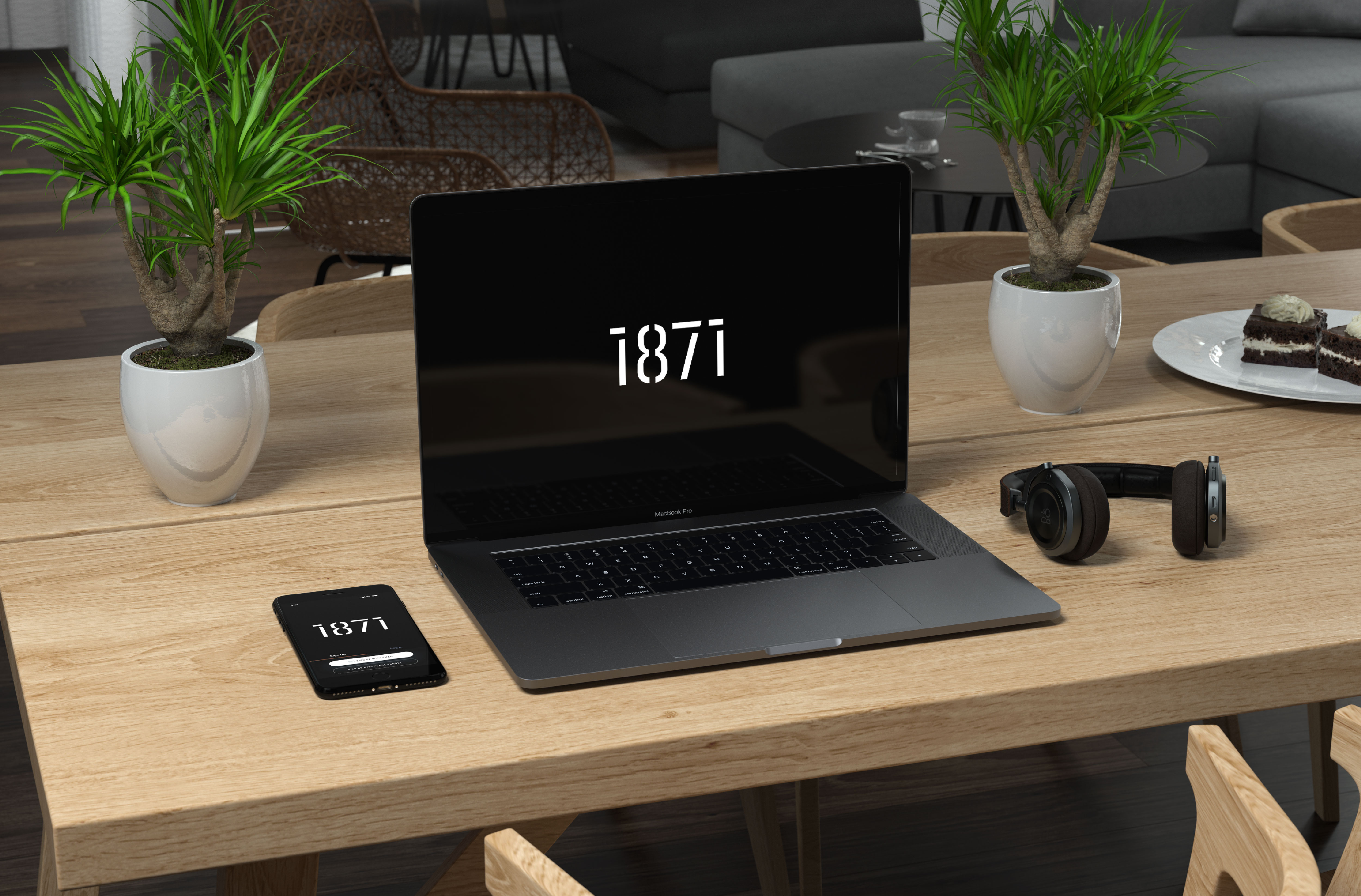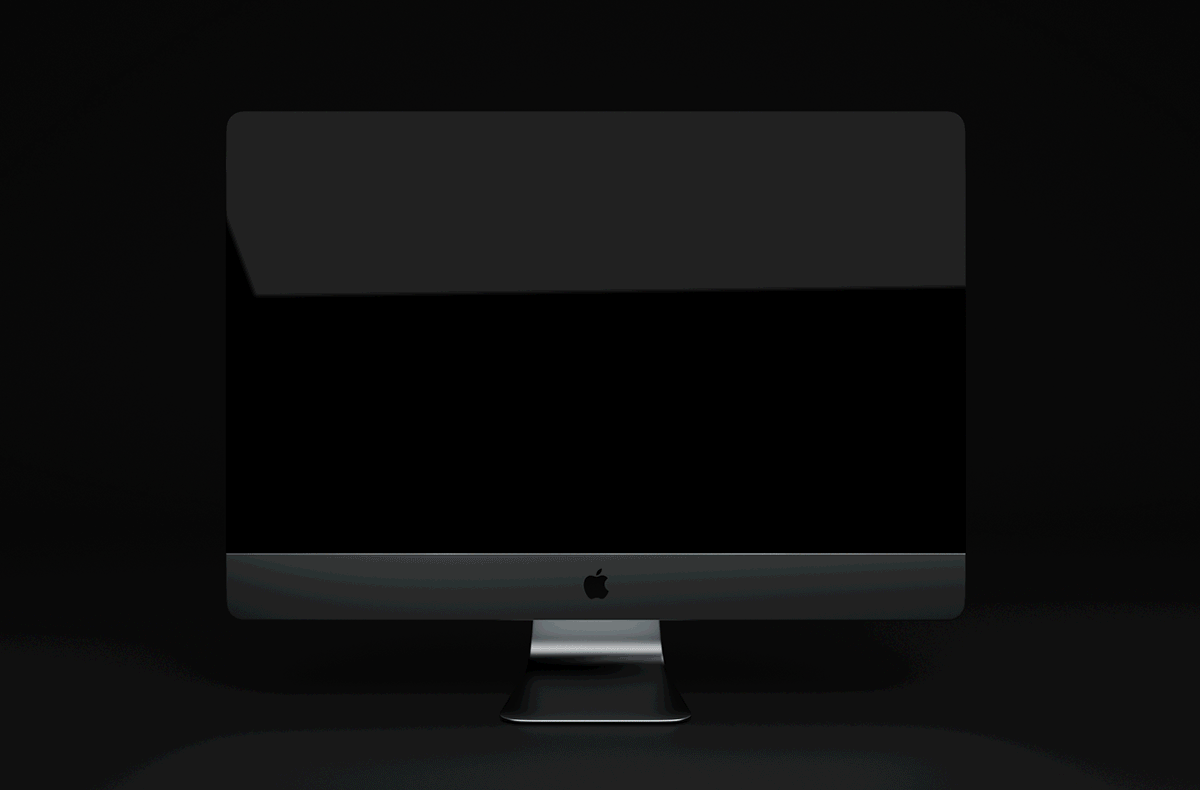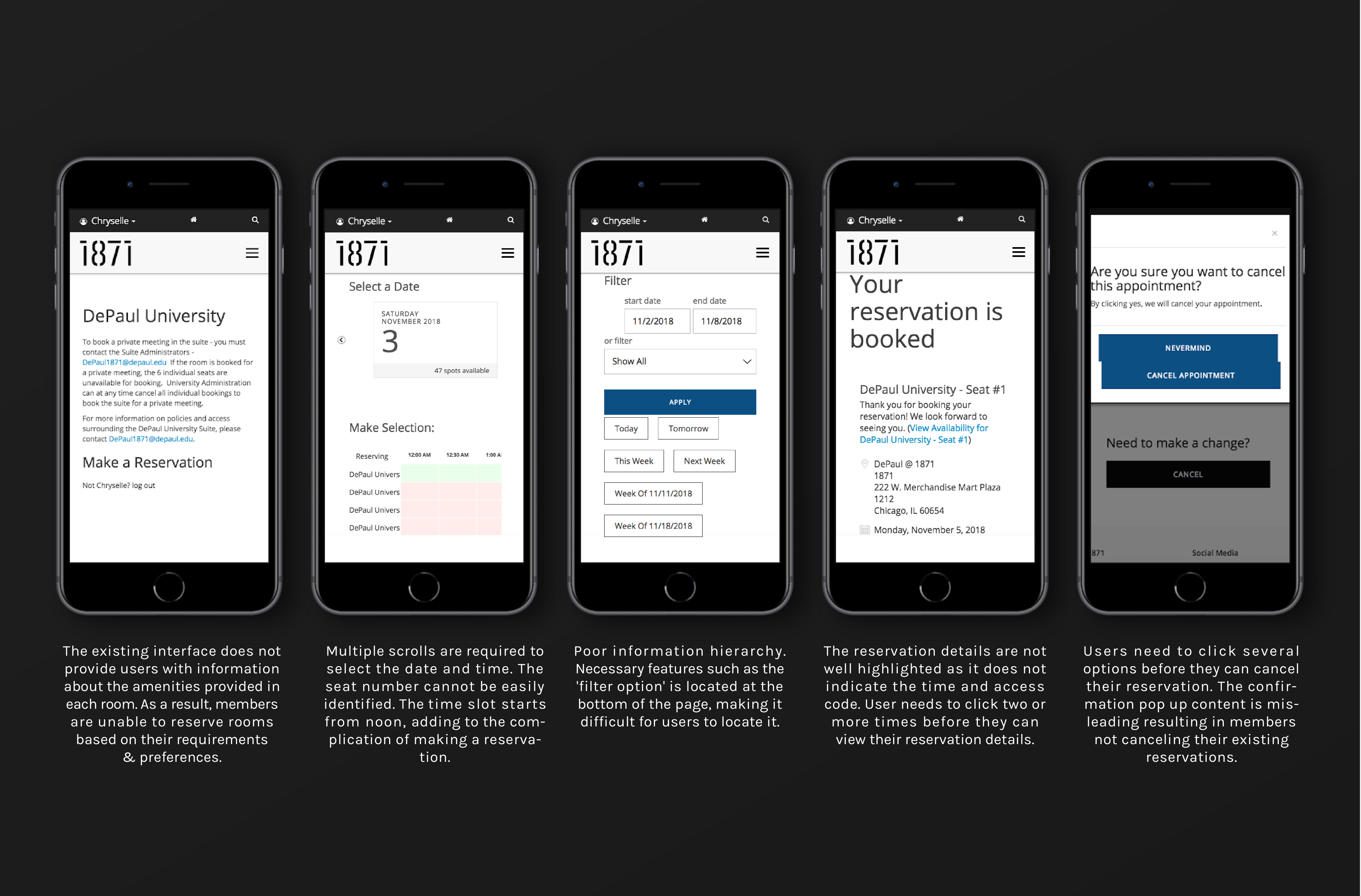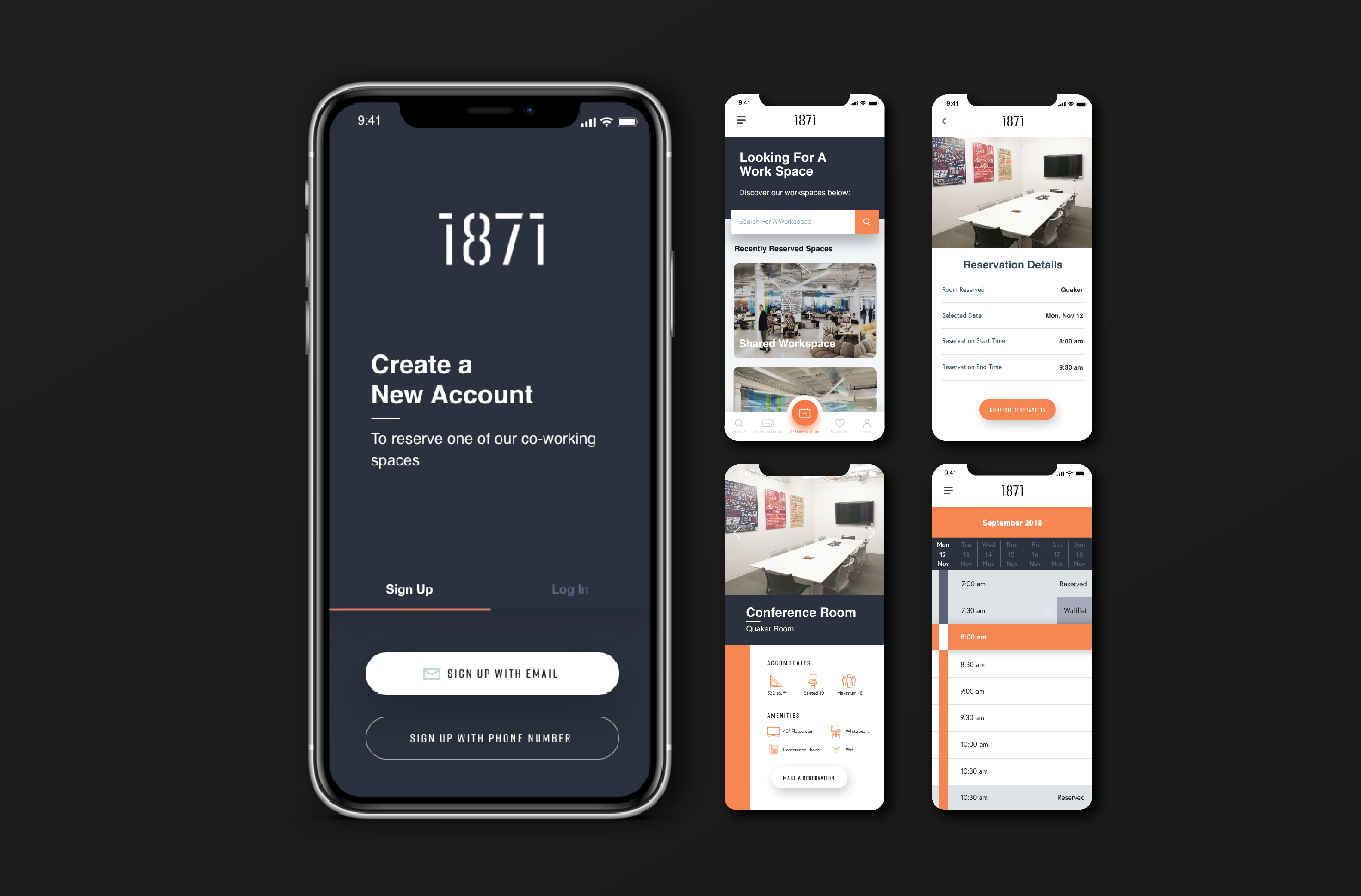


This Chicago based company promotes the growth of startup communities by developing programs, establish partnerships and running projects that provide entrepreneurs with the tools they need to build successful sustainable businesses. Above all, 1871 offers traditional co-working space, private offices and conference rooms to accommodate the many stages of a company’s growth.

1871 was faced with the challenge of accommodating its ever-increasing members. The objective was to design solutions that prevented them from spending time and resources on additional staff, space reconfiguration and expenditure associated with purchasing amenities.
Laura Clark, the Vice President of Operations at 1871 turned to the students of DePaul’s EXP 480 Collaboration Studio program, to identify the problem and propose solutions that could improve space and amenity utilization. As a student of the Collaborations Studios program, my key responsibilities involved conducting ethnographic research, data cleaning/sorting/organizing, synthesizing research to identify the needs, conducting a heuristic evaluation on the existing interface and lastly designing short-time and long-term solutions. The strategy was to identify opportunities to increase the efficiency of space usage and develop solutions that were cost-efficient, easy to implement, and enhanced member experience.

Members were observed, interviewed, and invited to participate in design activities where they were assigned with three tasks i.e. write anonymous Tweets to 1871 management regarding their experiences; share their comforts or pain points regarding the co-working space and finally write a breakup letter to the management suggesting changes or implementations that needed to be made.
The participatory design suggested that the availability of conference rooms was one of the main problem areas. Since the goal was to solve the issues of space utilization and enhance the member experience, we collectively focused on the issues surrounding the conference room.

To make the process of data collection easier, we partnered with SpaceBot, a spatial intelligence company that provided us with the required dataset which enabled us to craft suitable solutions. SpaceBot placed sensors in key locations throughout 1871: at the main entrance, in the auditorium, and inside three conference rooms of varying sizes and amenities. The sensors collected headcount and spatial usage flow data which was then interpreted to reveal conference room usage and booking trends. Findings were visualized using Tableau, a data visualization software.

A heuristic evaluation was also conducted to identify common usability issues with individual elements of the existing interface to determine how they impact the overall user experience. The findings suggested that the poor user experience and bugs in the booking interface interfered with members’ use of the site to book and cancel reservations. Since the existing booking process was lengthy and complicated, members distrusted the existing system and preferred walking into a vacant conference rooms without making prior reservations.

To ensure long-term member satisfaction, we fixed the issues concerning the booking interface. We redesigned the existing interface to simplify the process of booking and cancellation by reducing the number of clicks to do so. The new interface is designed in a way that enables members to receive alerts when the meeting is about to start and end. In addition, members can easily access reserved rooms by adding themselves to a waiting list.

The updated features allow members to reserve conference rooms of their preferences and modify their room reservations without having to cancel their reservations.